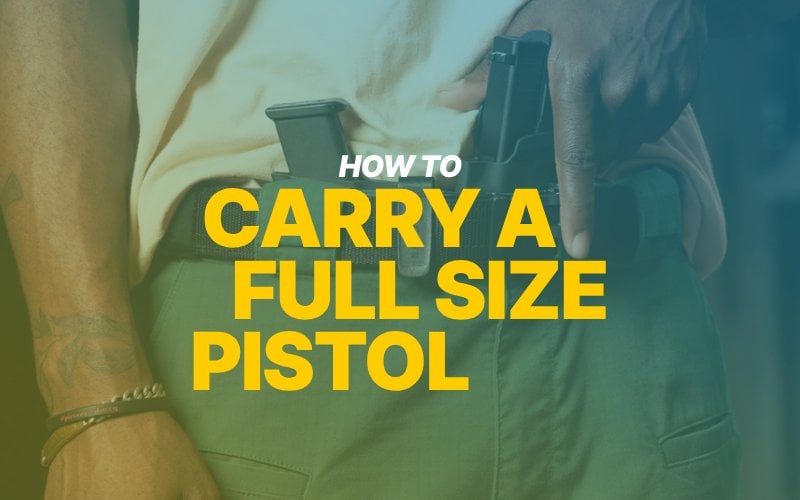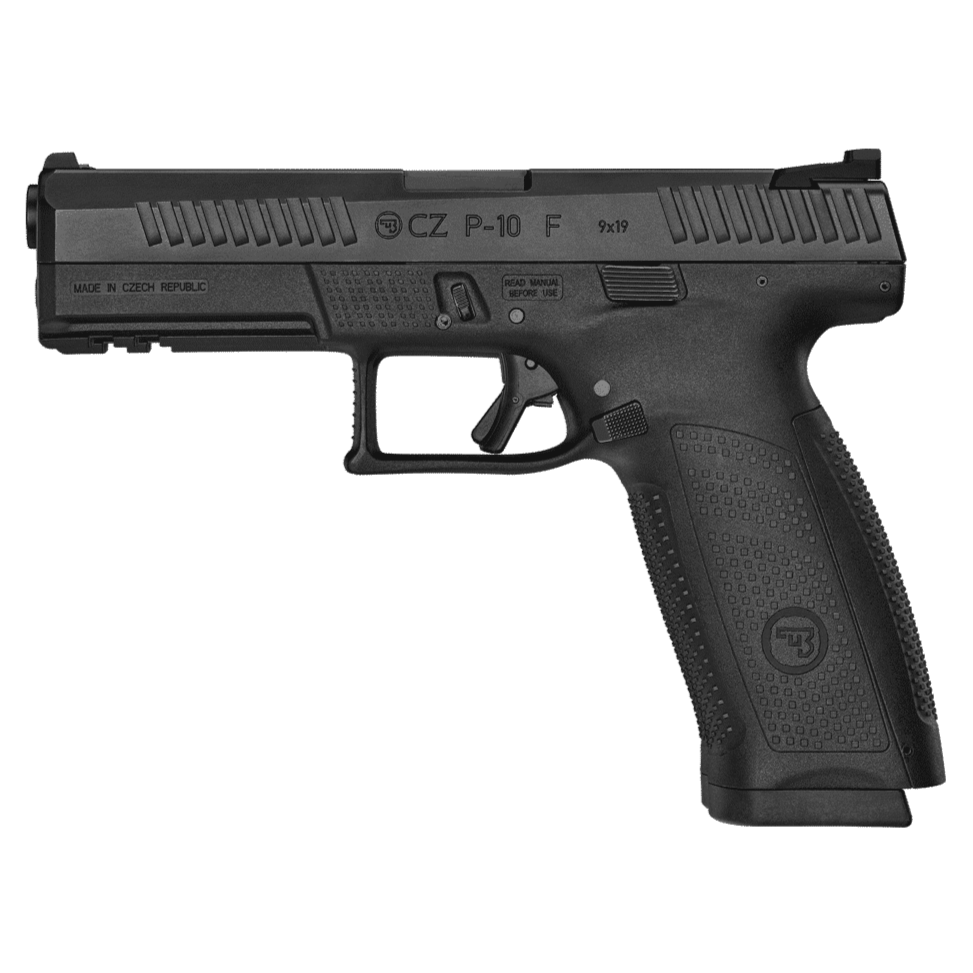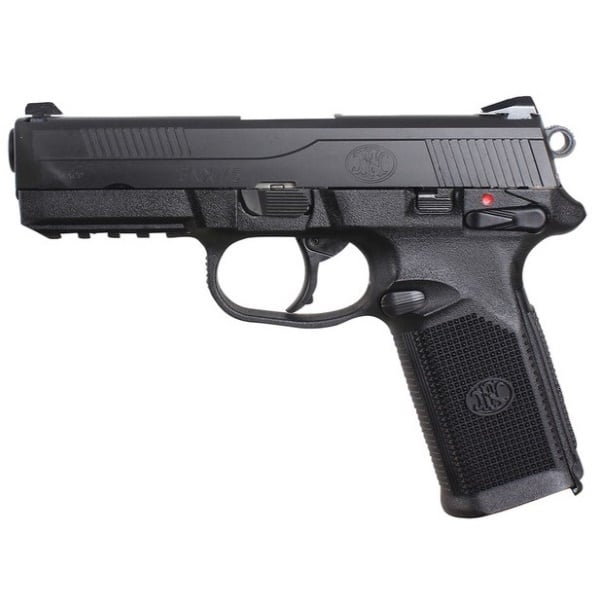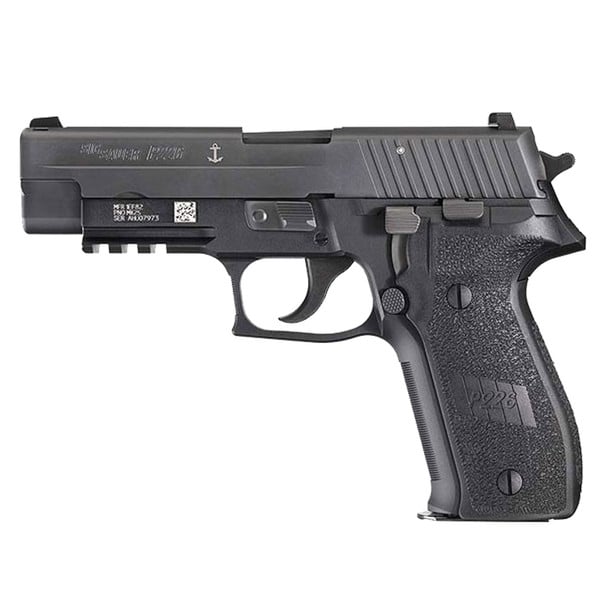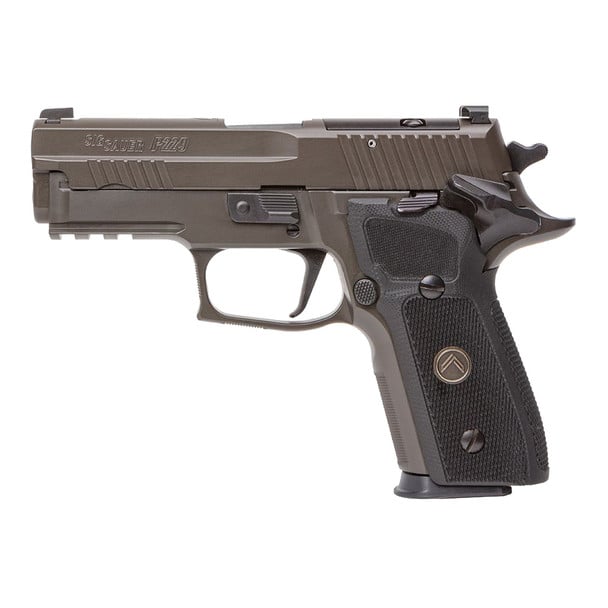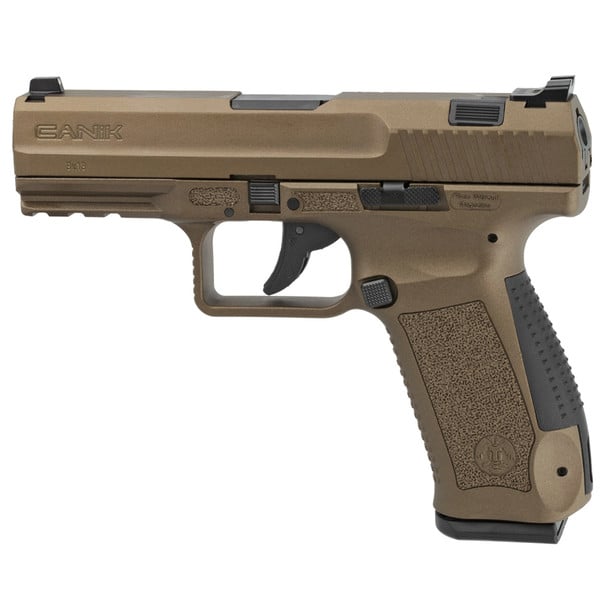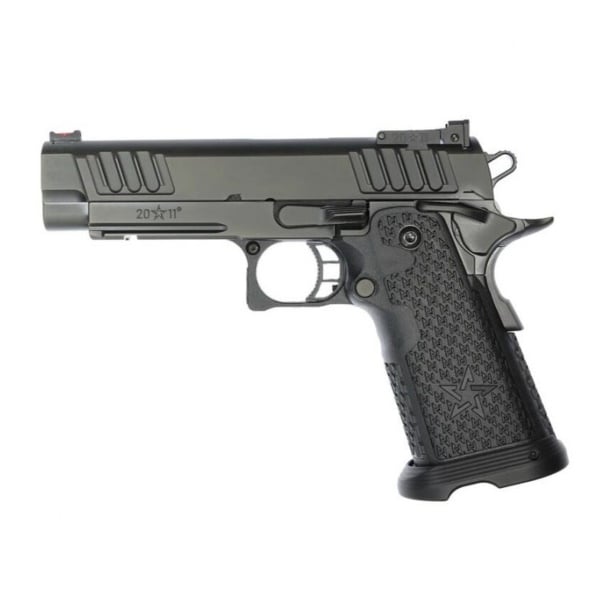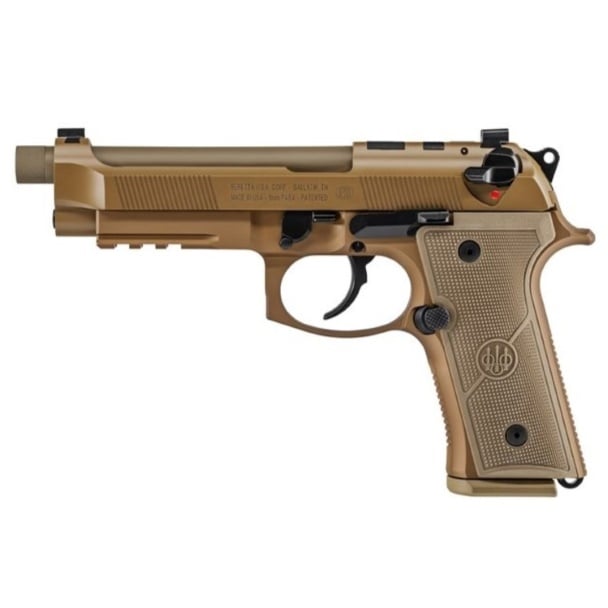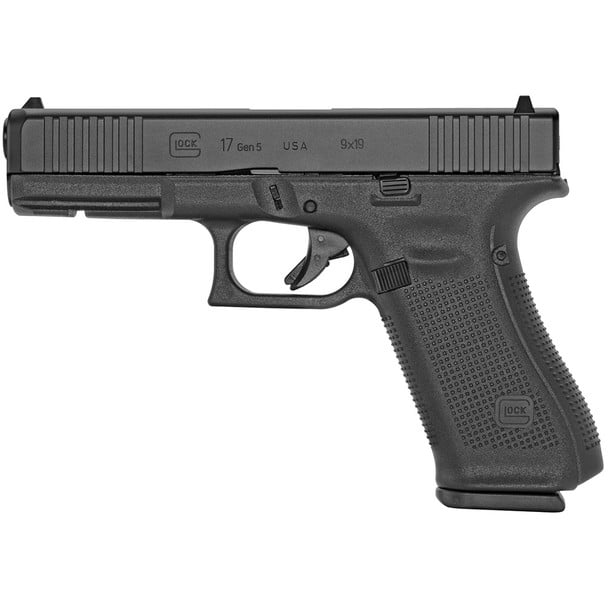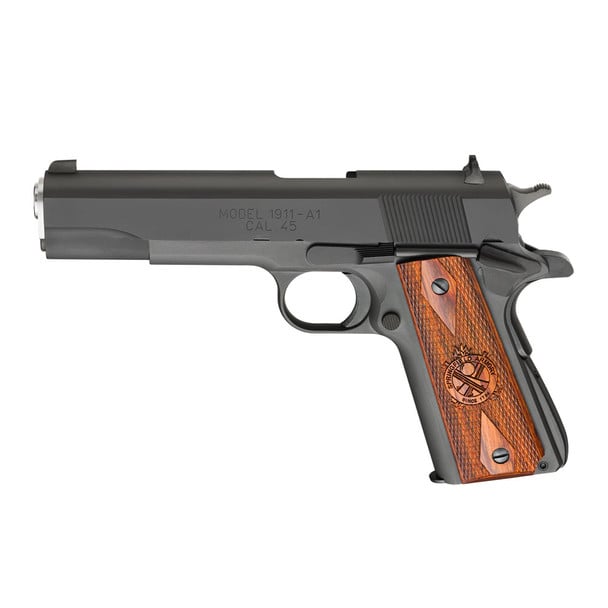Carrying a full-size pistol might sound like more of a challenge compared to the smaller, more concealable subcompacts, but for many, the trade-offs are absolutely worth it. From better control and accuracy to higher capacity and dependability, full-size pistols can bring a lot to the table—but only if you carry them thoughtfully.
Whether you’re carrying a full-size 1911, a Glock 17, or something like an M&P 2.0, the key is in the setup. With the right holster and belt combo, along with a few adjustments to your wardrobe, you’d be surprised how effectively you can conceal and carry even the largest handguns.
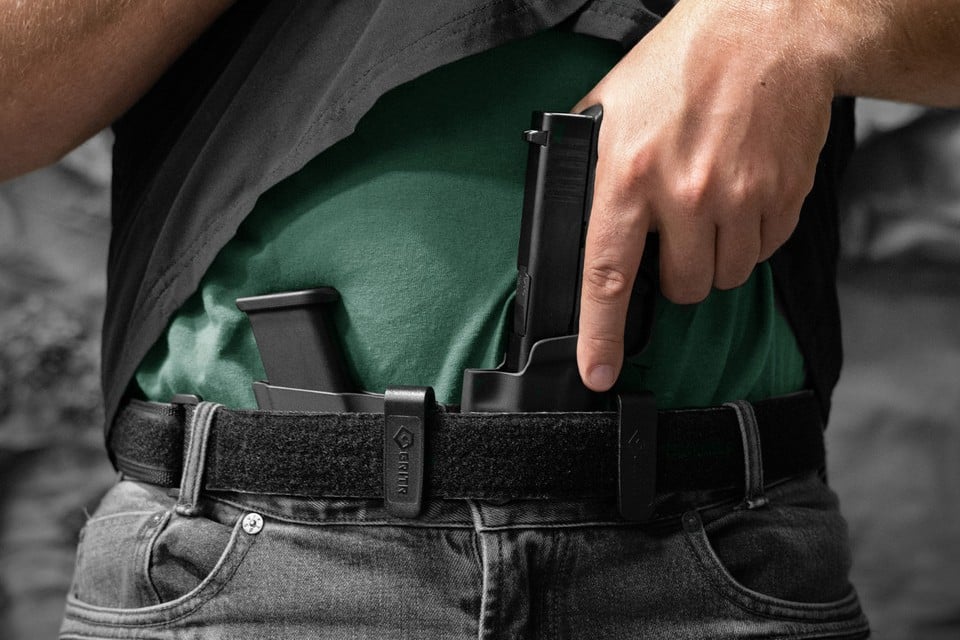
Why Carry Full-Sized?
The debate between compact and full-size pistols isn’t new. Smaller guns are undeniably easier to conceal and generally more comfortable to carry for long periods. But the advantages of a full-size handgun can’t be ignored:
Capacity & Caliber
Full-size pistols often hold more rounds and accommodate larger calibers compared to compact or subcompact models. For instance, a Glock 17 gives you 17+1 in 9mm, while a typical micro-compact might max out at 10+1. Those extra rounds can matter, especially in worst-case scenarios.
While having extra rounds can be advantageous, real-life defense situations rarely require firing more than a couple of rounds. This ties into a broader discussion between minimalist carriers, who prioritize compactness and simplicity, and “better safe than sorry” proponents, who value higher capacity for peace of mind.
Ergonomics
With a larger grip, full-size pistols tend to fit the hand better. This improves control, reduces felt recoil, and makes it easier to shoot accurately under stress.
Accuracy
Full-size pistols generally provide a longer sight radius, helping you align your sights more accurately. Coupled with reduced recoil, this makes grouping shots more consistent.
Reliability
Full-size guns run with fewer reliability issues. They’re not as prone to failures due to limp-wristing or fouling as smaller guns sometimes are. If you’re relying on your firearm to save your life, that dependability gives peace of mind.
That said, carrying full-size handguns does bring challenges, primarily related to their weight and size. Addressing these challenges boils down to what gear you use and how you dress.
TRY OUT THE BEST FULL-SIZE CARRY PISTOLS
If you’re in the DFW area, swing by our shooting range and try out full-size pistols from established brands like Glock, SIG, CZ, and more!
Get the Right Holster
Your holster is arguably just as important as the pistol itself when it comes to concealed carry. I’ve seen too many people spend a small fortune on the perfect pistol, only to try to carry it in a cheap nylon holster grabbed from the bargain bin. Please, don’t do that.
A good holster securely holds your gun, keeps it stable, and positions it properly for a fast, efficient draw. Most importantly, it should be comfortable enough for daily wear.
Kydex vs. Leather
I’ve carried full-size pistols for years, both in Kydex and leather holsters. Kydex holsters, like those from JM Custom Kydex, Alien Gear, or Safariland, are rigid, lightweight, and perfectly shaped to your specific pistol, giving excellent retention and easy reholstering. Leather, on the other hand, offers superior comfort once broken in, hugging your body more naturally and flexing just enough to mold to you.
For everyday carry, I recommend trying both materials to see what works for you. Brands like BlackHawk, Galco, and Comp-Tac, as well as aforementioned brands, consistently deliver high-quality options tailored for concealed carry.
Don’t Skimp on the Belt
This is one of the most overlooked pieces of gear among new concealed carriers. A proper gun belt supports the weight of a full-size pistol without sagging or letting your holster flop around. Your everyday department store belt isn’t up to the job.
Look for a belt made specifically for concealed carry. These belts typically feature reinforced cores that prevent stretching under the weight of the firearm. Companies like Kore Essentials and Galco offer excellent options that combine support with a professional or casual look.

Dressing for Concealment
Your wardrobe is your last line of defense when it comes to concealing a full-size pistol. While smaller handguns often disappear under just a t-shirt, full-size pistols require a bit more effort to remain discreet.
Tops
Proper clothing is critical when carrying a full-size firearm. Loose-fitting (or slightly oversized) shirts and layered outfits go a long way in masking the outline of a full-sized pistol. Button-down shirts, heavier fabrics, and flannel are ideal for cooler climates.
For summer carry, concealment shirts or untucked polos can work wonders. Stay away from tight athletic wear if you’re carrying AIWB or IWB, as these fabrics cling and make concealment nearly impossible.
Stick to dark colors and vertical or non-repeating patterns as they help obscure printing.
Winter, of course, makes concealing easier. Coats and sweaters effortlessly cover up almost any firearm, making it the simplest season for those who EDC a larger option.
Bottoms
Make sure your pants can comfortably accommodate both the pistol and your holster, especially if you’re carrying IWB. A snug waistband can make carrying miserable. Add extra looseness (2–3 inches) around the midsection to accommodate a concealed pistol.
Consider Carry Positions
Appendix Carry (AIWB)
Many folks swear by appendix carry. This position places the pistol at the front of the body, typically between the 1 o’clock and 2 o’clock positions. For full-size pistols, this position is often the easiest to conceal because the gun sits along your beltline, covered by the widest part of your torso.
If you’re going to carry appendix, invest in a high-quality holster with a wedge or wing. These accessories help push the grip into your body, reducing printing and improving comfort.
Strong-Side Carry
This is your classic 3 o’clock or 4 o’clock position on the hip. While perfectly viable for full-size pistols, it does require a bit more effort to conceal. You’ll want to make sure your cover garment drapes naturally over the handgun without getting hung up on the grip.
Shoulder Carry
Shoulder holsters are useful for keeping the weight off your waistband. While less common for day-to-day concealed carry, they’re excellent for people who sit for long periods or prefer wearing jackets.
Full-size or Compact for EDC: Why Compacts are better
Practicality in Real-World Scenarios
The versatility of subcompact and compact pistols often outweighs the raw performance benefits of a full-size gun, especially in real-world defensive situations. A compact pistol can still provide adequate firepower while being far more versatile for different carry situations or attire, such as exercising, commuting, or running errands. Smaller pistols are simply more adaptable to the varied day-to-day activities of the average EDC carrier.
Holster and Gear Limitations
While high-quality holsters can help mitigate some of the concealment and comfort issues of a full-size firearm, they can’t eliminate them entirely. Many carriers find that while gear such as wedges, wings, or belt attachments can improve the carry experience, these adjustments are often more effective with smaller firearms than with larger ones.
Choosing a proper gun belt, holster angle, and carry position are vital for making any handgun work for EDC, but full-size guns often push the limits of what these accessories can reasonably compensate for.
Overestimated Performance Needs
Some argue that full-size pistols provide unnecessary performance benefits for civilian EDC scenarios. Defensive encounters are typically close-range, high-stress situations that don’t rely on the extended sight radius or increased capacity of a full-size gun. Compact and subcompact pistols, with training, can be just as effective at typical defensive distances.
Psychological Impact
There’s a valid case to be made about the heightened awareness and psychological burden of carrying a full-size firearm. Larger, more cumbersome handguns may leave carriers feeling self-conscious about printing or being noticed, leading to hesitation or a tendency to leave the handgun at home altogether.
Your EDC set-up should never be a hassle or feel unnatural. If the handgun’s size and weight make you question carrying, it likely defeats the purpose of EDC altogether.
Stay Comfortable and Confident
Carrying a full-size pistol in your daily life isn’t always easy, but once you get your setup dialed in, it’s absolutely worth it. A reliable, accurate firearm gives you a level of confidence smaller guns often can’t. Sure, there are sacrifices in weight and concealment, but with a good holster, stiff belt, and well-thought-out wardrobe, those sacrifices become manageable.
